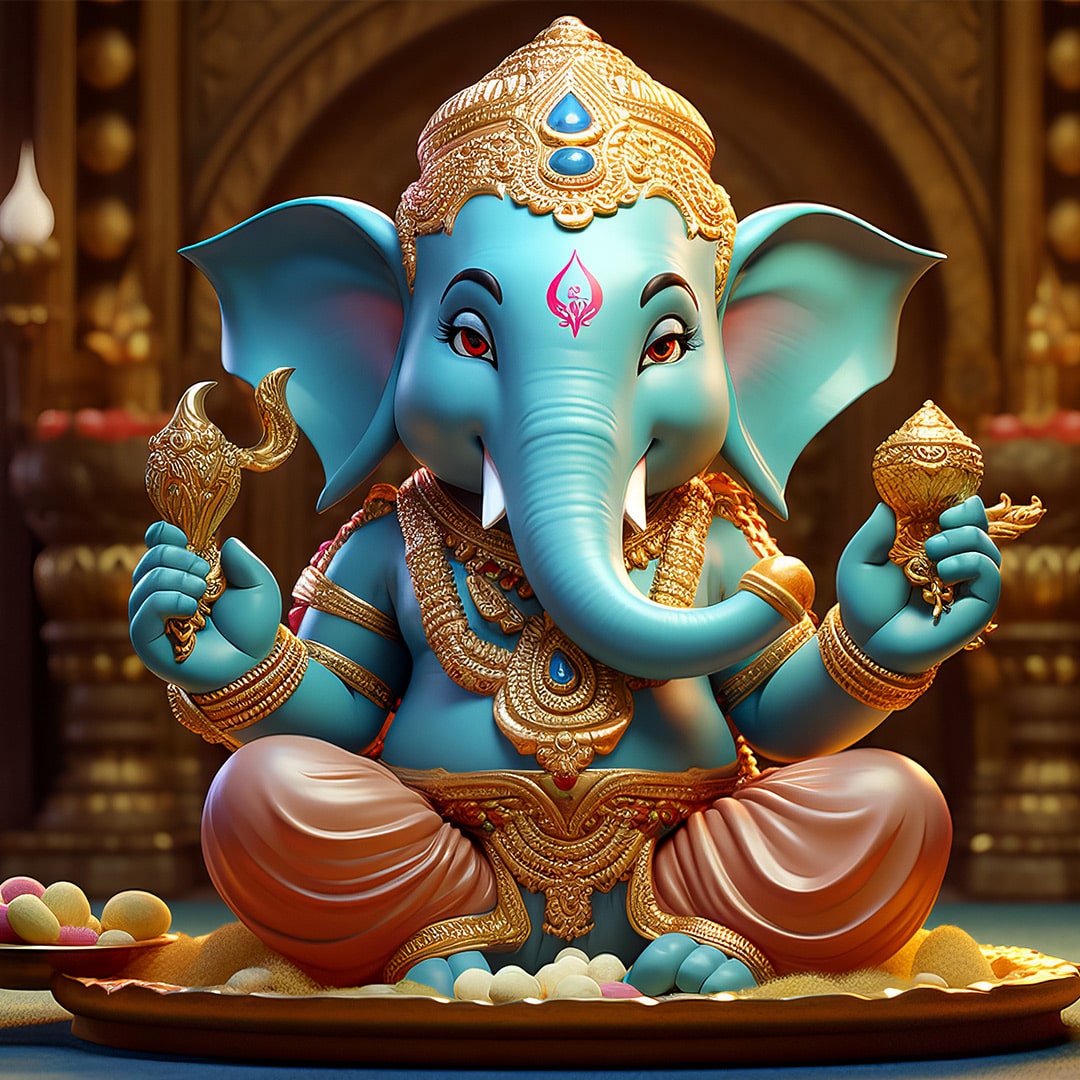

Please enter the code we just sent to whatsapp 91-11-46710500 to proceed
Didn't Receive OTP?

There are many stories associated with Ganesha but one of the lesser-known stories of Ganesha is why Lord Ganesha loves modaks.
Modaks are the sweet dish offered to lord Ganesha when we worship him. But do you know how lord Ganesha developed the love for this sweet yummy dish, filled with delicious stuffings? Let’s have a wonderful journey to explore it.
Lord Ganesha who loves to eat, visited his maternal grandmother Queen Menavati. Queen Manavati would welcome lord Ganesha with laddu to satisfy his hunger. But as she grew old, Queen Menavati thought of some other alternative of laddus so that she could make it easily and quickly. She came up with an idea to make modaks. She offered it to her grandson lord Ganesha and lord Ganesha ate it delightfully. This story tells us why lord Ganesha loves to eat modaks so much.
According to another story, lord Shiva, goddess Parvati and lord Ganesha visited Anusuya in the forest. Anusuya is the mother of the moon god also known as Chandra Deva. So, when lord Ganesha met her, she offered him a modal to eat. By eating one modal lord Ganesha burped to show he was full. This story tells us how lord Ganesha felt happy and satisfied by eating a modak.
Ganesha, the god of new beginnings, wisdom and luck is also known as Ganapati, Vinayaka, Lambodara and Vighnharta. He is one of the most well-known and most worshipped deities in the Hindu culture and the supreme god in the Ganapatya sect. Lord Ganesha was born from the clay made by the goddess Parvati. Goddess Parvati after making lord Ganesha with clay went to take a bath, instructing him to guard the place and allow no one to enter the premises. Lord Ganesha as a dutiful son started guarding the place. At that time, lord Shiva came but lord Ganesha didn’t allow lord Shiva to enter the place. This made lord Shiva angry and he beheaded lord Ganesha. Seeing this goddess Parvati became very sad and asked lord Shiva, why he beheaded his own son’s head. Realising his mistake, lord Shiva searched for a proper head for lord Ganesha and finally joined an elephant head to his body. This is how lord Ganesha got his new head as an elephant head. The name ‘Ganesha’ means lord of the elephants.
Have you ever tried Modak? We are all aware of lord Ganesha’s love for modaks. Modaks are recognised in many ancient texts like Ramayana and Mahabharata. It also has its name in Ayurveda. It is described as dumpling confectionery with sweet stuffings. Modak comes in different varieties like steamed modaks which are made of coconut or jaggery. Fried modaks are made by frying the modaks in deep fry in oil. Mawa modaks are made with ‘khoya’ as their stuffing. During Ganesha Chaturthi puja, generally, 21 or 101 modaks are offered to lord Ganesha.
Hinduism is a religion with many gods and goddesses. The Trimurti: “The tribal form” of Hindu gods includes Brahma, Vishnu and Shiv. Brahma is the creator of the world and all living things. Lord Vishnu is the preserver and protector of the universe. Lord Shiva is the destroyer of the universe. Lord Shiva is also the lord of the dance. Lord ‘Natraj’ is a form of lord Shiva. Goddess Saraswati, Lakshmi and Parvati the the prominent gods and goddesses worshipped in Hinduism. The followers of Hinduism have many different systems of their beliefs, philosophies and rituals but the destination of god realisation is the same that is unifying with god which is known as liberation or moksha. For many centuries Hinduism has flourished in different areas. The word Om is used in meditation and is also a part of Hinduism. Om is associated with Brahma, the beginning.
Hindu mythology is a rich tradition of stories about mythological characters. It is the stories of myths attributed to the Hindu religion. Different epics like Ramayana, Mahabharata and the Puranas tell the stories of Hindu gods and goddesses. Many such stories revolve around Lord Krishna and Lord Rama and many stories of lord Ganesha such as how lord Ganesha got his vahana ‘mooshak’ or lord Ganesha’s lessons taught to Moon god and Kubera. These mythological stories tell us many moral and ethical values which we can inculcate in our lives.
In Hinduism and Hindu culture symbolism is an important thing. The objects connected with god and goddess represent many meanings. When we look at lord Ganesha, his features define various things in life. It also helps us to understand the characteristics of the deity. Let’s see the symbolism of lord Ganesha.
Large ears of lord Ganesha say listen more. The axe which he holds asks to cut off all the bonds of attachment. A small mouth represents talking less. Lord Ganesha’s blessings, bless and protect us on our spiritual path to supreme. Their large stomach tells us that they peacefully digest all good and bad in life. The big head of lord Ganesha advises us to think more. The small eyes of lord Ganesha ask us to concentrate. A rope in his hand pulls you nearer to the highest goal. One tusk, retains good throws away bad. The trunk shows us high efficiency and adaptability. Modak highlights rewards and sadhana. Lord Ganesha’s mouse is a great representation of desire, that needs to be controlled.
Ganesha Chaturthi has a huge significance in Hindu culture. This festival promotes unity as it brings people together from different areas of the world. The creation of the idols and decoration of the pandals help to build community bonding. The organisation of the procession fills the air with joy and happiness. The arrival of Ganapati Bappa is welcomed wholeheartedly by his devotees. The preparation of Ganapati started many months ago. The process of festival preparation brings great enthusiasm to devotees. During the festival, unity can be seen among people.
The Vedic chants fill the environment with spirituality and the sweet smell of modaks accelerates the hunger after the worship. Ganesha Chaturthi is a festival where lord Ganesha is welcomed as our family member. Serving him with great delight helps a devotee to attain his or her spiritual growth.
Lord Ganesha, the god of wisdom blesses and protects his devotees. The stories of him from mythology guide us in our path. The symbolism of lord Ganesha executes the facts, that we should follow to attain great success in our lives. We pray to lord Ganesha to always shower his blessings on us. May he give us the strength to fight all the problems in our way?
“वक्र तुंड महाकाय, सूर्य कोटि समप्रभ:। निर्विघ्नं कुरु मे देव शुभ कार्येषु सर्वदा।।”
Shape Your Kid's Future with Bambinos Classes | World’s first Bhagavad Gita course for Kids | Click here to Book a Free Class Limited time offer.